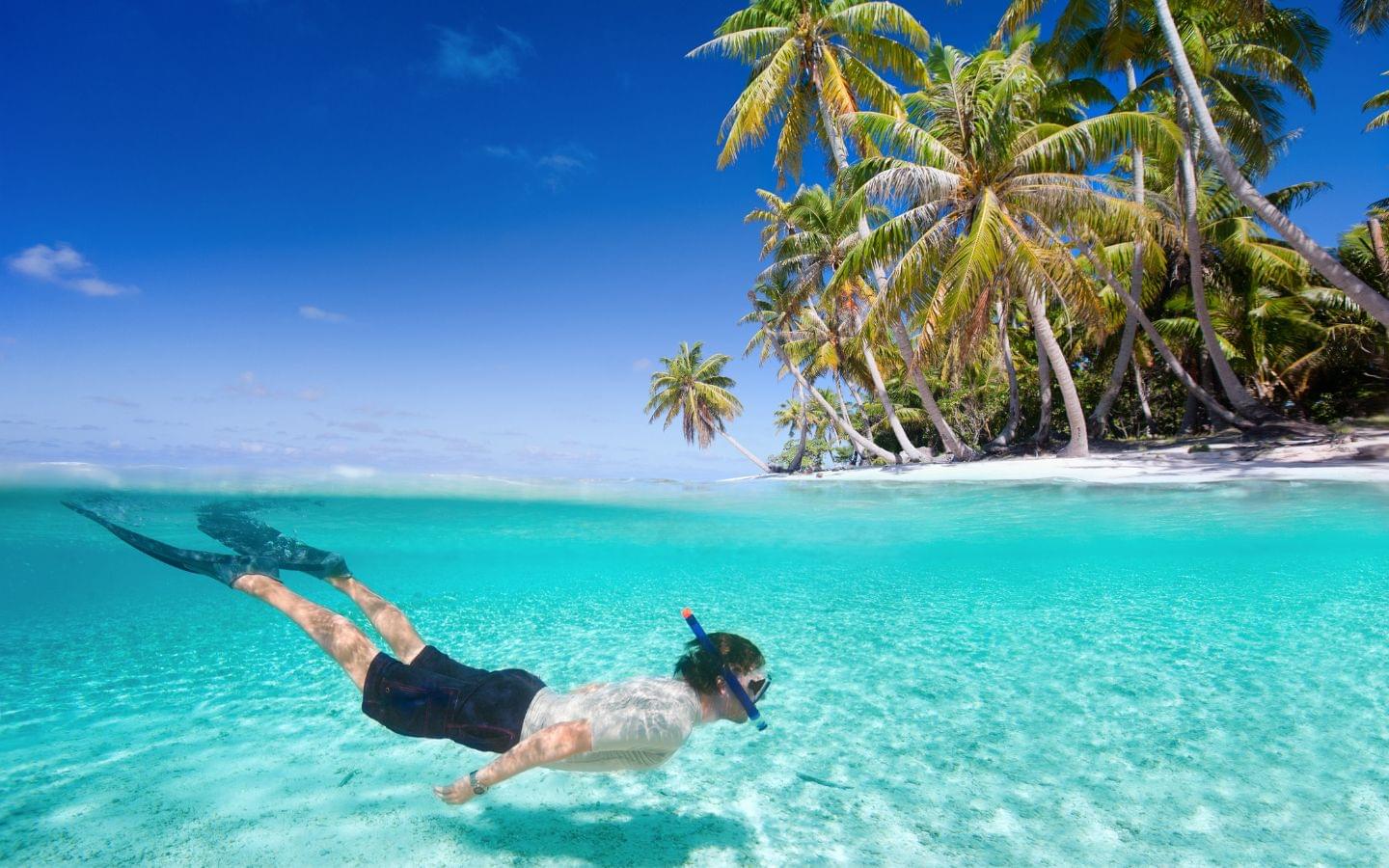Snorkel vest vs. life jacket: Which is right for you?
Whether you’re an experienced snorkeler or new to this exciting activity, wearing the right flotation device can make a snorkeling outing safer, more relaxing and more comfortable.
Snorkel vests are generally a better choice than life jackets because they allow you to swim freely with your head in the water and easily view the marine life below. Below we break down why snorkel vests excel for snorkeling, explore other flotation options and offer tips on choosing the right vest.

Snorkel vest vs. life jacket: how are they different?
Both snorkel vests and life jackets provide additional buoyancy, but several crucial differences make snorkel vests far better for snorkeling. A life jacket is designed to keep your head out of the water and is usually made of foam. Because of their construction, life jackets are bulkier than snorkel vests and make it difficult to float comfortably on the water’s surface with your face down. A snorkel vest, on the other hand, is lightweight, compact and inflatable, allowing you to swim or float with your face submerged.
-
Snorkel vests: Lightweight and compact
-
Inflate or deflate for adjustable buoyancy
-
Let you float face-down to see marine life
-
Allow better freedom of movement
Pros
-
Life jackets: Made of foam and bulky
-
Keep your head above water
-
Restrict movement when face-down
-
Not designed for diving below the surface
Cons
Why are snorkel vests better than life jackets?
Overall, snorkel vests are more comfortable and versatile for snorkeling. Unlike life jackets, snorkel vests don’t restrict freedom of movement and help you maintain proper body positioning. They can prevent you from swallowing water by keeping you in a horizontal position.
Most foam life jackets have a fixed buoyancy rating, whereas snorkel vests offer flexible buoyancy based on how much air you inflate them with. They often include an oral inflation tube and a quick-deflate mechanism for diving beneath the surface. This easily adjustable flotation control makes snorkel vests more versatile in various conditions. For example, saltier water provides more buoyancy1, so you may need less air in your vest.
Keep in mind that snorkel vests are not designed for rescue or life-saving purposes. They often do not meet the U.S. Coast Guard safety standards required for boating, kayaking or water skiing. If you plan to do those activities, you’ll need a separate Coast Guard–approved PFD2.
The bottom line: Snorkel vests give you freedom of movement, adjustable buoyancy and a better view underwater. Life jackets are great for boating and general water safety, but they’re too bulky for most snorkeling adventures.

Reasons to wear a snorkel vest
Safety
Snorkel vests are crucial for non-swimmers and strongly recommended for beginners. Even strong swimmers benefit from the added safety in case of medical issues, strong currents or marine hazards. Their bright colors make you more visible to boats and guides.
Comfort
Vests keep your body in the correct position for snorkeling and let you float calmly at the surface while gazing at the seafloor. Less effort is needed to stay afloat, so you can relax and enjoy the view.
Some snorkel vests include a thin neoprene back panel, which adds a bit of warmth in cooler water. It’s not a replacement for a wetsuit but can improve comfort.
Laws and regulations
In certain areas, local laws may require snorkelers or children to wear a vest. Tour operators also often insist on them for safety.
Alternative PFDs
Fun noodles, ski belts and other options
Some snorkelers use floatation devices like ski belts, fun noodles, swim buoys or pool floats. These can provide extra buoyancy and visibility, but they are not designed for snorkeling. They may slip off or drift away and don’t keep you in the correct position.
No flotation
Experienced swimmers sometimes skip flotation aids altogether. If you have no health issues and are confident in calm conditions, you can snorkel without a vest. Stay close to shore, avoid open water and always snorkel with a buddy.
How to choose a snorkel vest
Snorkel vests come in two main styles:
Horse collar
These vests fit over your head and secure with straps around your waist and crotch. They’re compact and travel-friendly but offer minimal thermal protection.
Our top pick on Amazon: Rrtizan Unisex Adult Size Inflatable Snorkeling Vest
Jacket
Snorkel jackets provide more coverage, including neoprene panels for warmth, pockets and attachment points for gear. They’re bulkier but offer added comfort and support.
Our top pick on Amazon: Scubapro Cruiser Snorkel Vest for Men and Women
When choosing a vest, consider these tips:
- The vest should fit snugly without restricting movement.
- Use the manufacturer’s size guide and, if possible, consult an expert. Sizing is often based on weight.
- Jacket-style vests are less adjustable, so pay extra attention to waist measurements.
- Choose a bright color for better visibility.
Frequently asked questions
Frequently asked questions
Why should I choose a snorkel vest over a life jacket?
Life jackets are designed to keep your head above water, which makes it hard to look down and can restrict your movement. Snorkel vests are lightweight and inflatable, allowing you to float face-down and adjust your buoyancy as needed.
Do I need a snorkel vest if I’m a strong swimmer?
Even strong swimmers benefit from a snorkel vest. It helps conserve energy, provides extra safety in case of emergencies, and increases your visibility to boats and guides.
Are pool noodles or ski belts good alternatives for snorkeling?
Floatation aids like noodles or belts can offer buoyancy and are often brightly colored, but they’re not designed for snorkeling and can slip away or put you in an awkward position. Snorkel vests are purpose-built to keep you comfortable and stable.
What type of snorkel vest should I buy?
Horse-collar vests are compact and suitable for most snorkelers. Jacket-style vests provide more warmth and support. Fit is crucial: ensure the vest doesn’t ride up, and choose a bright color to stay visible.
Conclusion
Snorkel vests offer freedom of movement, adjustable buoyancy and a comfortable way to enjoy the underwater world. While life jackets are essential for boating and water sports, a purpose-built snorkel vest will enhance your snorkeling experience and keep you safer.
References
-
Pawlowicz, R. “Key Physical Variables in the Ocean: Temperature, Salinity, and Density.” Nature Education Knowledge, vol. 4, no. 4, 2013, p. 13, nature.com. ↩
-
“Life Jacket Wear / Wearing Your Life Jacket.” USCG Boating, uscgboating.org. ↩
Last updated 30 August 2025




